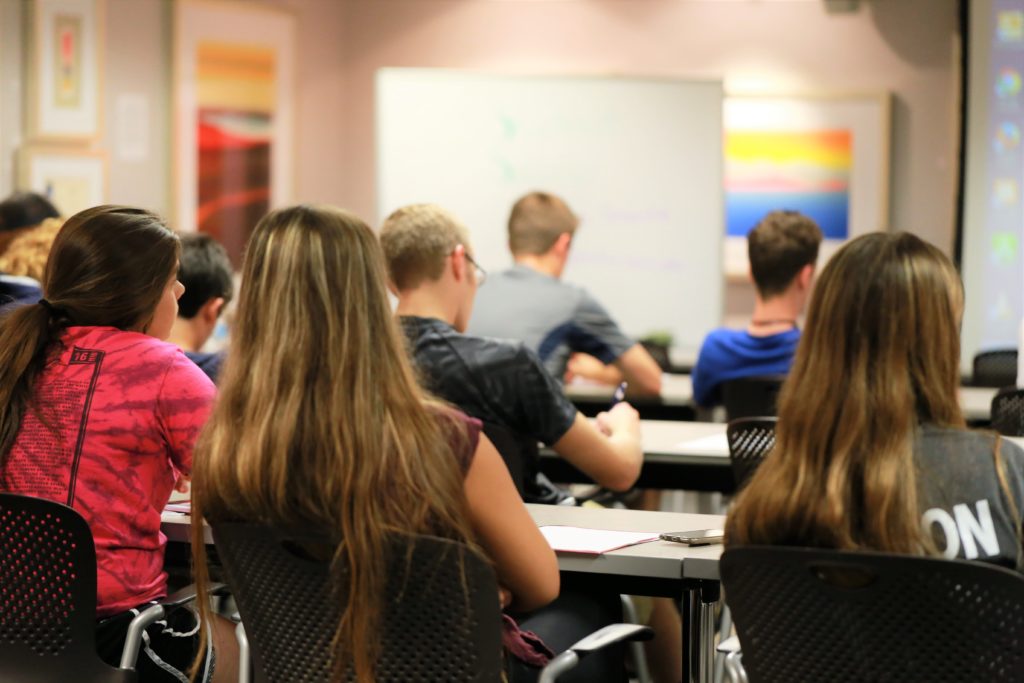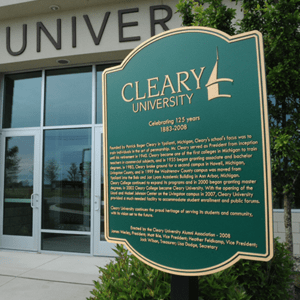
As a university, we are committed to responsibly guiding our students to manage their higher education journey in a fiscally responsible way. The cost of higher education today is a national conversation that seems to have no consensus regarding resolution.
When we talk to students about funding their education, many think to attend college, they must end up with a mountain of debt from student loans, says Elizabeth Peters, Senior Financial Aid Coordinator at Cleary University. They don’t realize that when you file the FAFSA, the Free Application for Federal Student Aid, it’s not just to secure loans.
There are different types of financial aid, including grants and scholarships that students do not have to pay back. To be considered for any financial aid whatsoever, from loans that you do have to pay back to grants and scholarships, students must fill out the FAFSA. But doing so does not mean they are committing to borrowing money, Peters assures.

Even then, when students do decide to take out loans to afford higher education, there are different types of loans. Subsidized loans are interest-free while a student is in school, whereas unsubsidized loans accrue interest once a disbursement is made. For some students, loans are their only option for attending a university, but they can borrow responsibly.
One thing Peters loves about Cleary is that we have a lot of options for our students that don’t include loans. Among our traditional student population, ages 18-23, many are student athletes, so they often qualify for an athletic monetary award. And, starting in 2021, almost every new, traditional student on our campus will receive an academic award if they are within a certain range of GPA on their official high school transcript.

For non-traditional students, who are often working adults, there are corporate scholarships and other funding sources for which they can qualify, and Cleary partners with different companies to bring affordable education to their employees.
So many misconceptions exist when it comes to funding higher education, which can lead to fears preventing students from moving forward with their education, Peters says. Many think they won’t qualify for free aid – but they can’t know that until they apply and go through the process.
That’s why it’s so important to fill out the FAFSA, which can take time, she urges. The FAFSA should be completed as soon as possible; the deadline for state aid is March 1st.

The FAFSA generates an expected family contribution, or EFC, based off an algorithm from the Department of Education, which considers household size and income to determine what a student might receive. A lot of schools, including Cleary University, use that as a benchmark when determining grants and scholarships, Peters confirms.
We work hard to help students borrow less, so they don’t amass huge debt before they graduate. And yet, this process and the question of how will I afford college can be intimidating, especially for first-time students and their parents. With that in mind, we host FAFSA nights at local high schools just to help families fill out the forms, even if they’re not considering a Cleary education, Peters says.

Even when families and students have saved money, they might not have enough to cover the cost of tuition. Peters firmly believes that when you’re looking to fund education, you shouldn’t let loans scare you. For some, loans are a necessity.
Your education is one of the most important things that you will purchase. It is possible to borrow smartly. We are here to help prospective students understand all the information and make responsible choices.
How can you be responsible with student loans?
- Borrow only what you need. Lending institutions and the Department of Education often offer more than the cost of tuition and books, but students don’t have to borrow that. Students can choose to take what they need and work to cover living costs while in school.
- Ask about payment plans. Our business office works with students, so they don’t have to pay their tuition bill in full on day one. You might have the option of four payments! Ask about your options.
- Look into work-study. Some students qualify for a need-based type of aid known as work-study, where they work at the school or in the community and get paid through federal funding. This can be a great way to afford college and also get to know your school even better. Some of our work-study students have gone on to build careers in administration here at Cleary!
- Apply for scholarships! There are so many scholarships out there for the taking. They do require essays or other application materials, so it takes work to apply, but every dollar counts. Look for reputable sites to find scholarships (read this article or visit here). Also, ask in your community, at your high school, at churches and local rotary clubs or foundations. They often have scholarships for local students!



